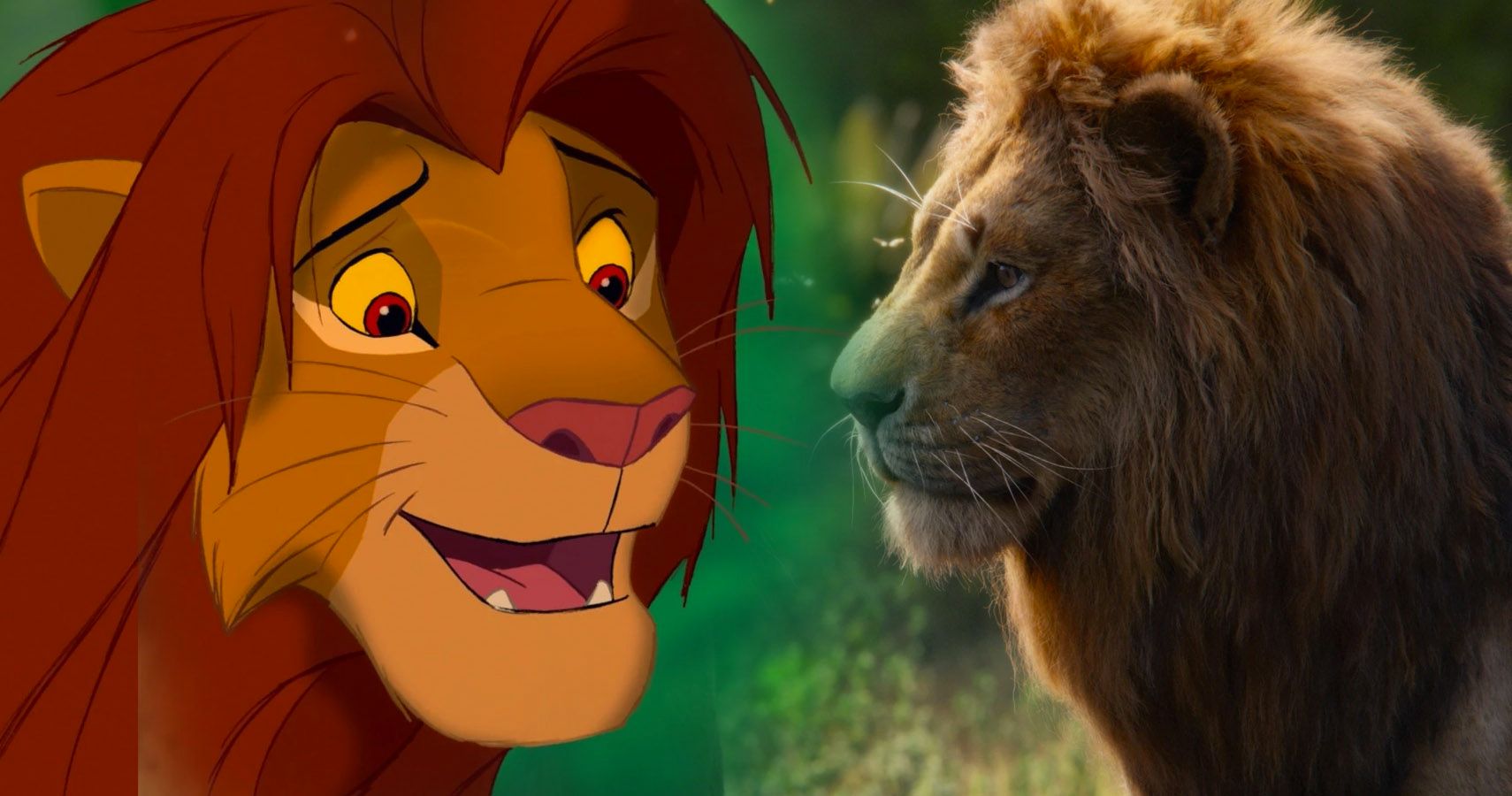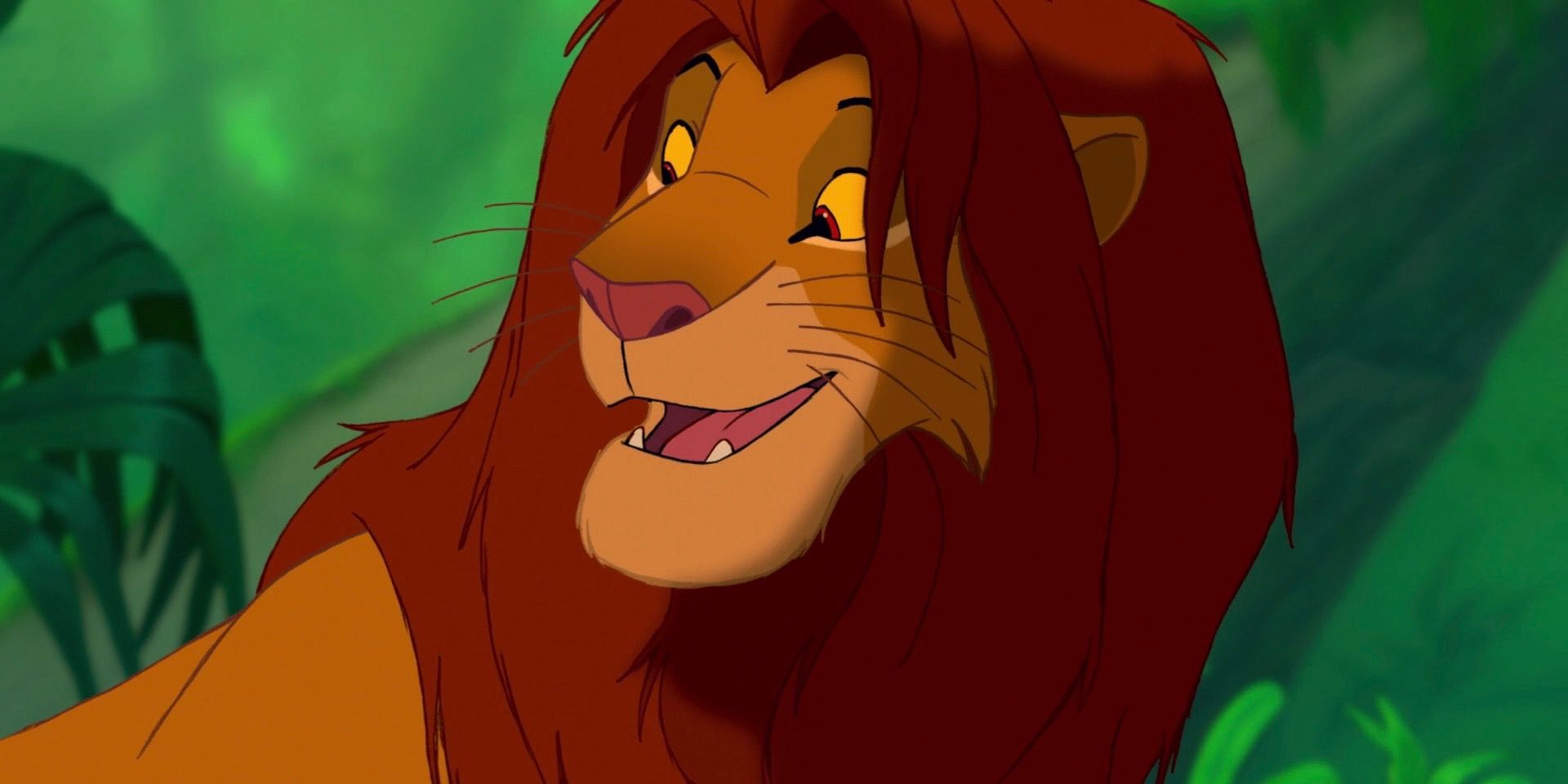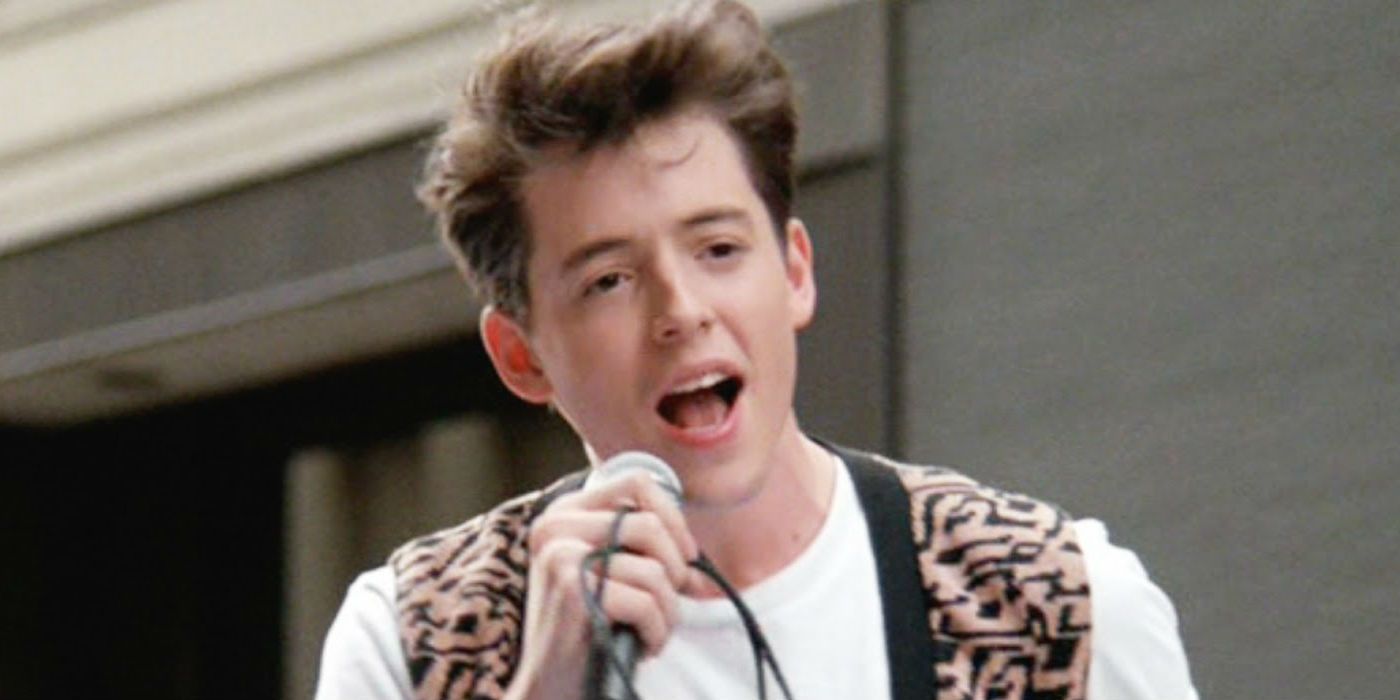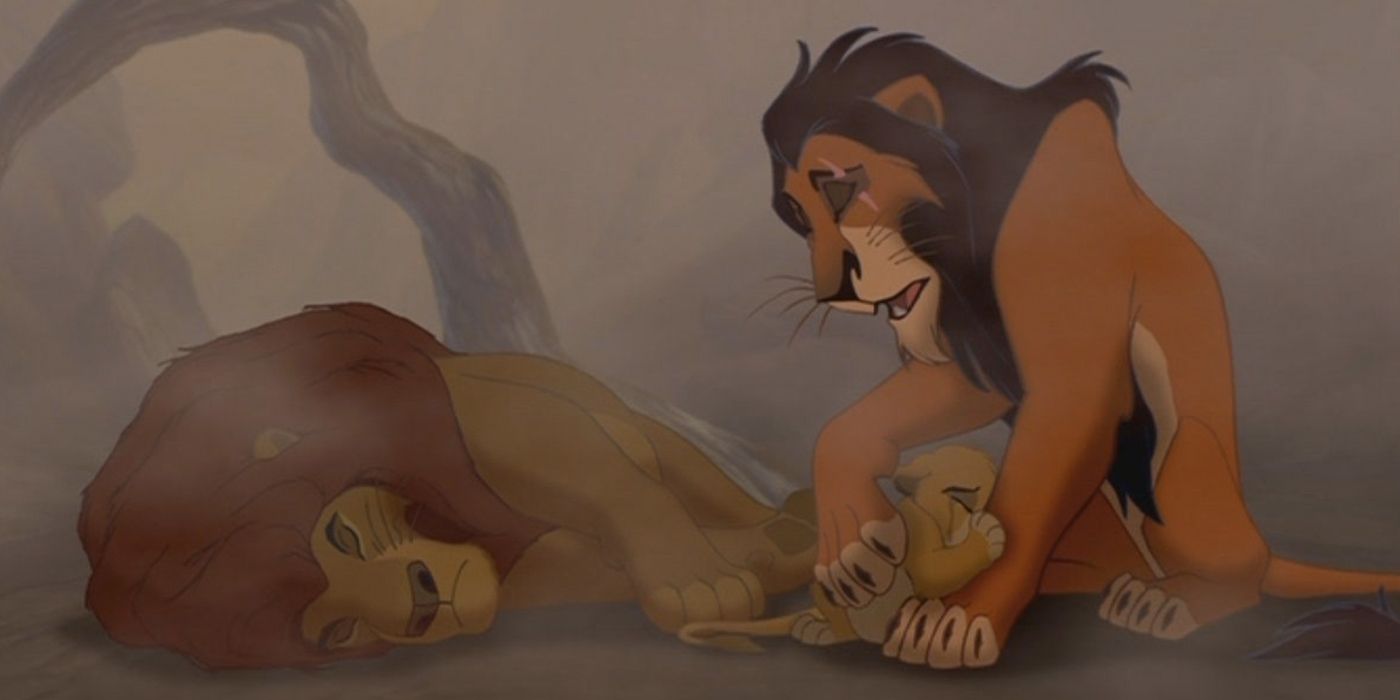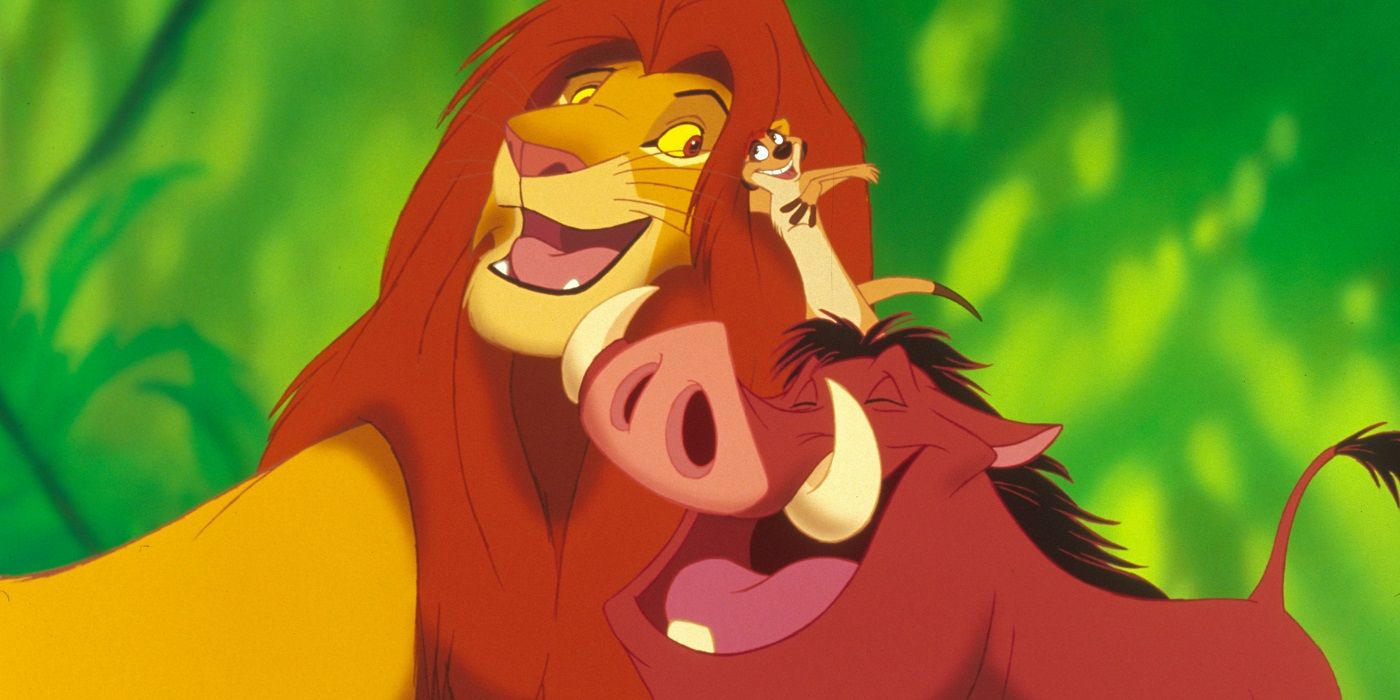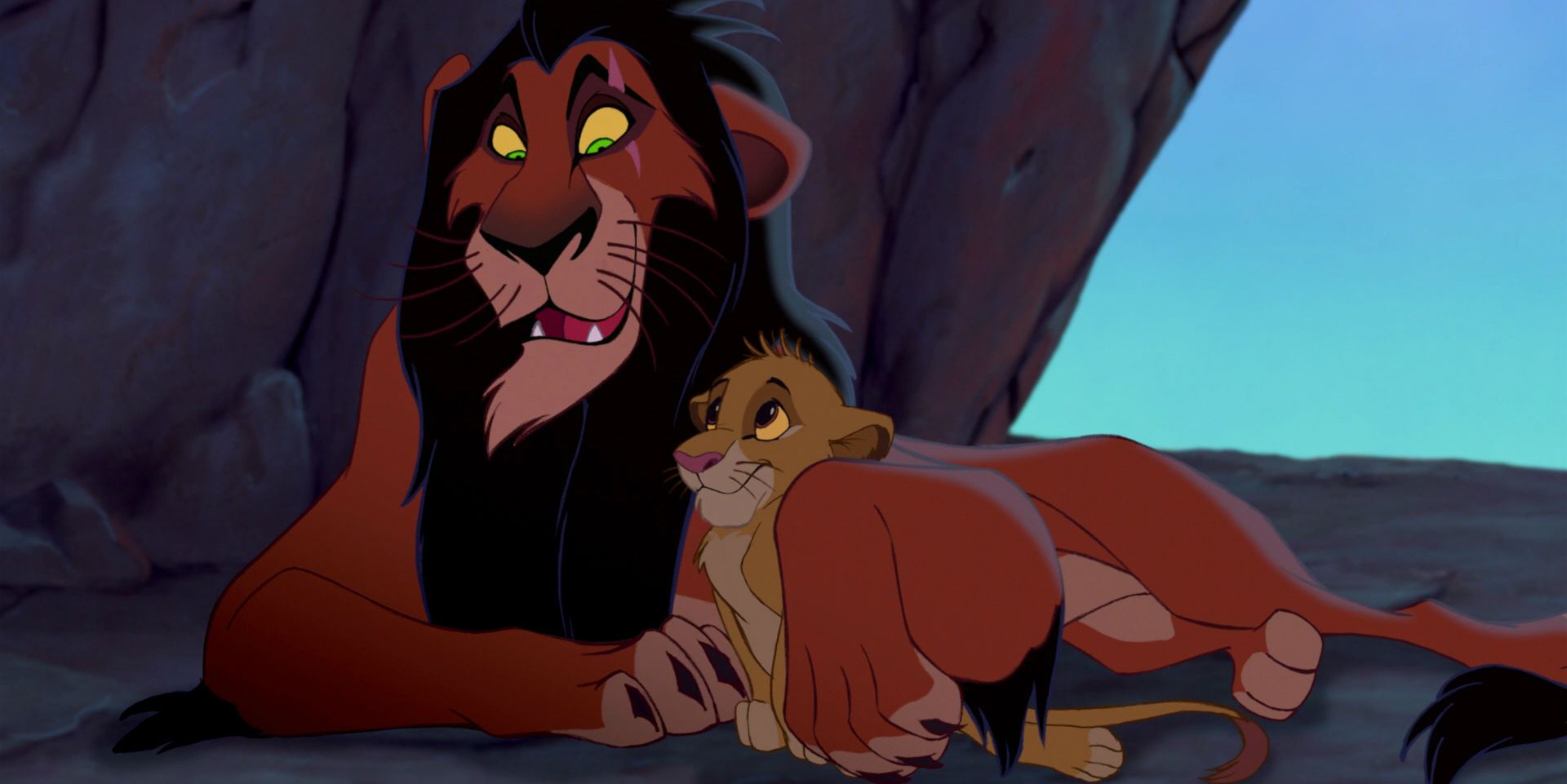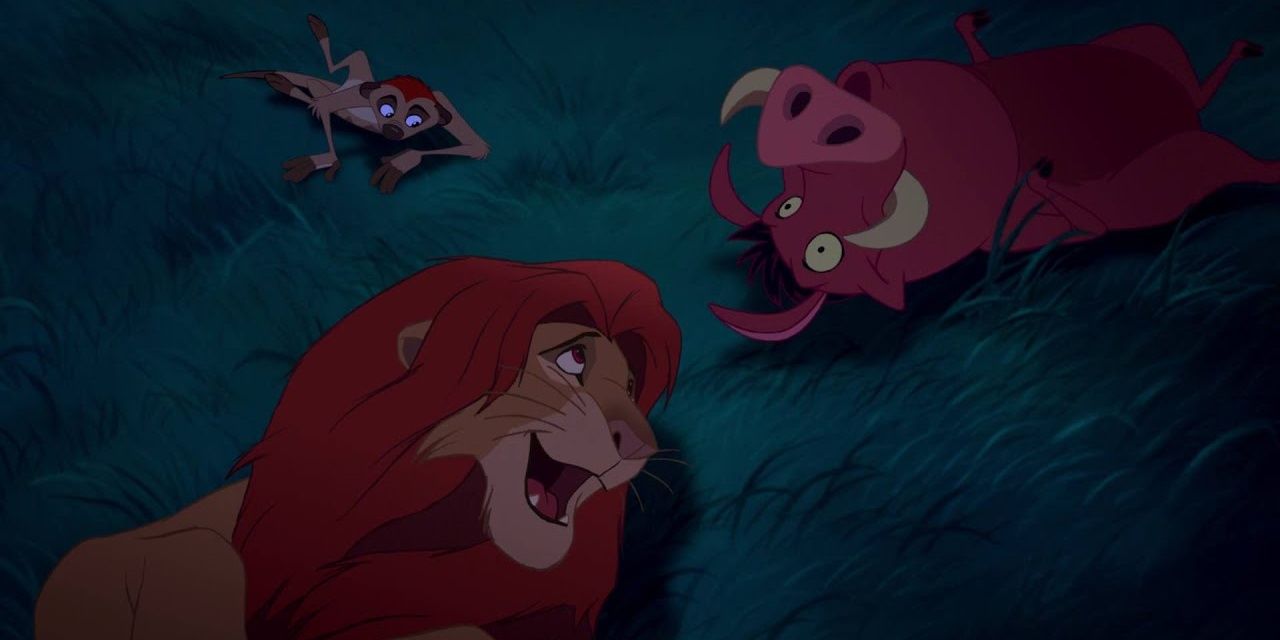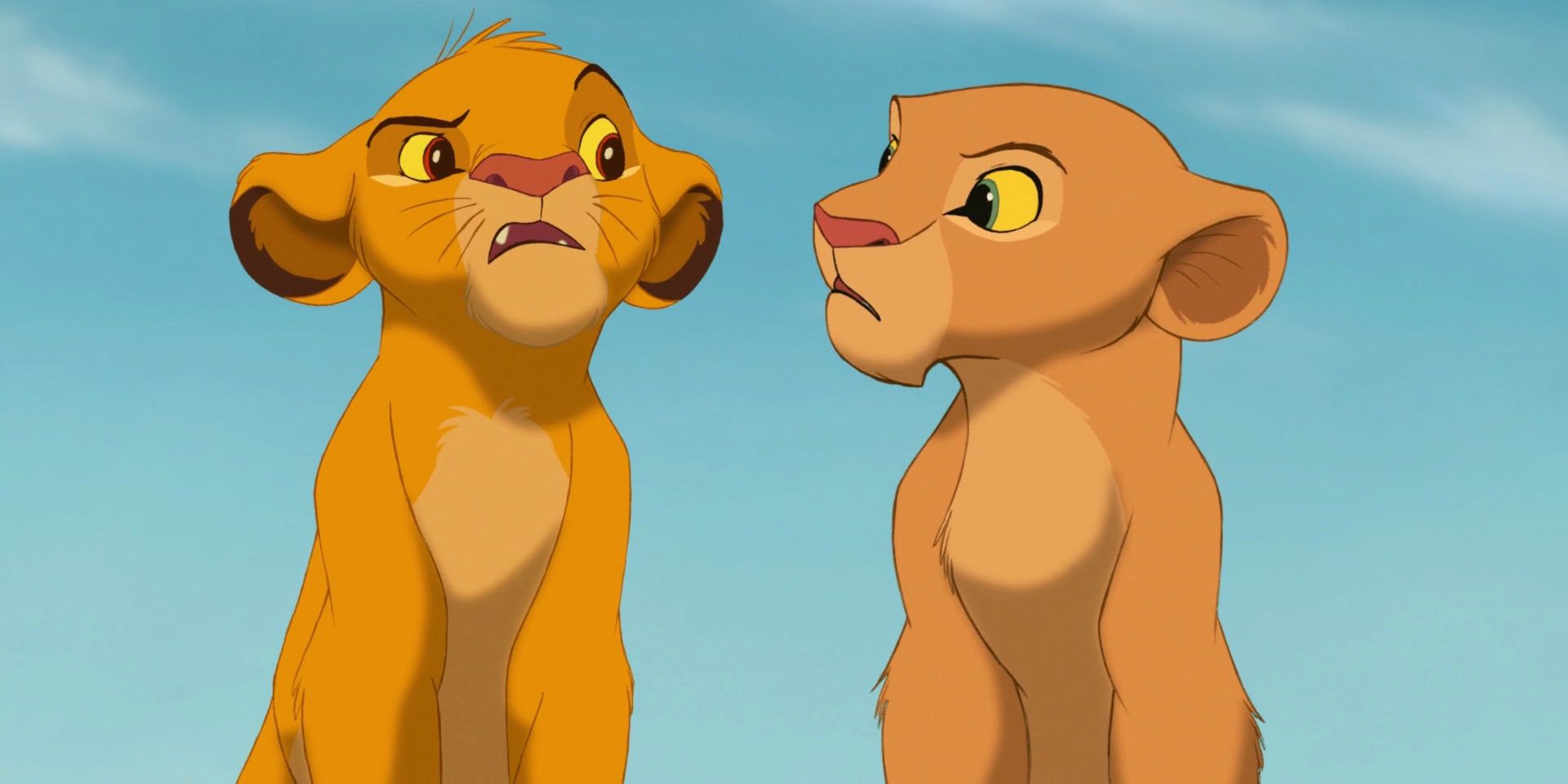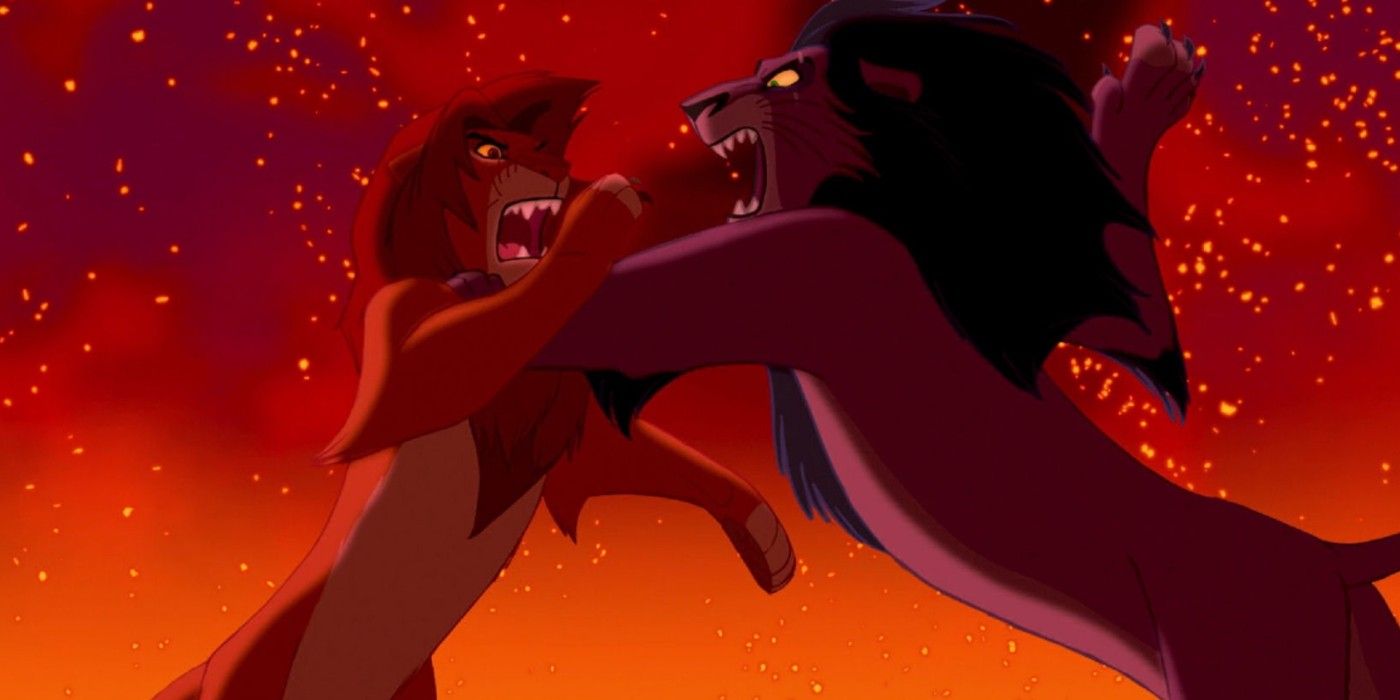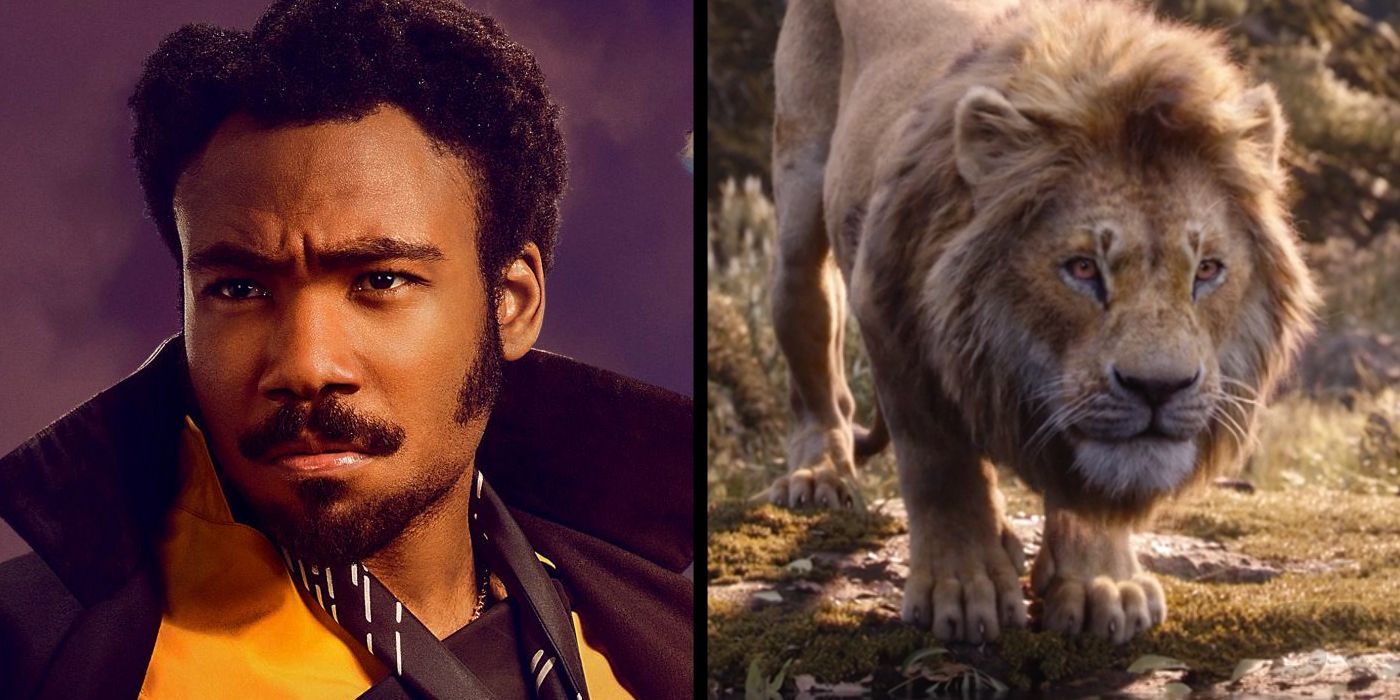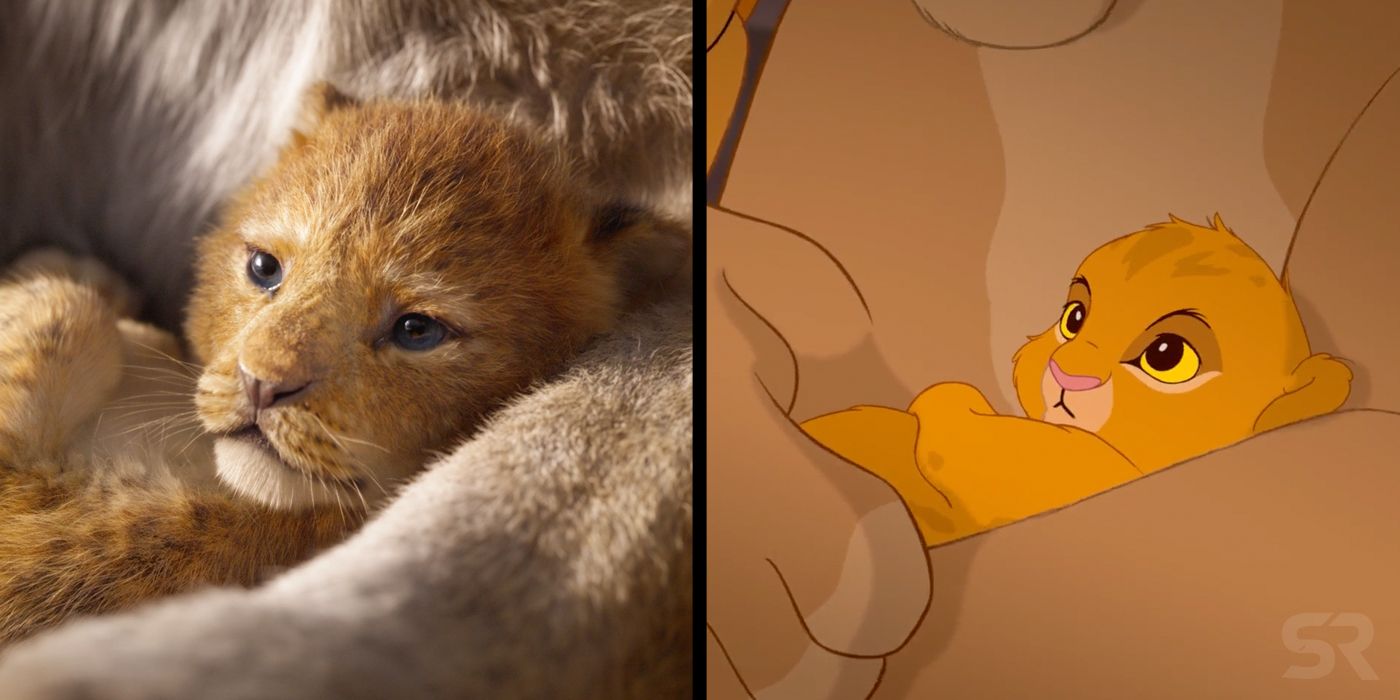It is safe to say that The Lion King is all about Simba, the protagonist who loses his father at an early age but grows up to rule Pride Rock. With the release of the 2019 remake, the love for this film and its characters has resurfaced among all Disney fans, reestablishing The Lion King as one of the most important franchises in the history of the studio.
All in all, 1994’s The Lion King is still among the highest-grossing animated movies of all time, being the only 2-D animated feature to still place in the Top 10. But even with so much fame and adoration, there are many facts about The Lion King characters that hardcore fans don’t know about. Read below to find out more about Simba!
ORIGINALLY, SIMBA WASN’T A VERY LIKABLE CHARACTER
Like any movie, The Lion King went through quite a few changes during its production. As it turns out, the vision for Simba was quite different originally, having the character hold on to his pride and be unable to overcome the loss of his father for years to come.
According to Brenda Chapman, who served as story head for The Lion King, the production team quickly realized that “It was our job to make the main character likable and sympathetic.” With that realization, Simba’s characterization began to take a lighter turn, and ended up reaching the version we’ve all come to know in the original 1994 animated feature.
DISNEY WANTED TO MAKE SIMBA LIKE FERRIS BUELLER
The original speaking voice of Adult Simba in the 1994 The Lion King is actor Matthew Broderick, who is perhaps best known for his work as the title character in 1986’s Ferris Bueller’s Day Off. Given that Simba was quite the unlikeable character during original versions of the script, it was a given that Disney needed to cast someone as charismatic as Ferris Bueller himself to voice the heir to Pride Rock.
With the massive impact that Ferris Bueller’s Day Off had on popular culture in the late 1980s and early 1990s, Disney decided to cast Broderick as Simba early on. As a matter of fact, the actor has stated that he was involved with The Lion King before the movie even had a script. Rather, the studio showed him “drawings and sketches” at first.
What was in it for Matthew Broderick? Well, he and wife Sarah Jessica Parker had just had their first child, and the actor saw an opportunity to do a Disney movie that his kids could watch while still being young.
SIMBA WAS ONE OF THE FEW LION KING CHARACTERS ANIMATED IN CALIFORNIA
In the early 1990s, Disney was working on The Lion King and Pocahontas simultaneously. However, as the story goes, it seemed like the studio and its animators were way more invested in Pocahontas, allocating fewer resources for the production of The Lion King. According to executive producer Don Hahn, “It was hard to get people to work on it, (...) because people were more excited about working on more traditional Broadway films.”
Consequently, many of the characters in The Lion King were animated in the Disney studios in Florida. The most notorious exception was Simba, who was actually animated in the main California studios. The difficulty here was that many of Simba’s scenes with other characters, such as Scar, were half done in one state and half done in another state.
THE SINGING VOICE OF SIMBA IS MORE FAMOUS THAN YOU THINK
Many people are familiar with the fact that Matthew Broderick is the speaking voice of Adult Simba in 1994’s The Lion King. However, what many people don’t realize is that Simba has a different voice when singing, and that voice is very, very famous.
Singing as Simba in “Hakuna Matata” and “Can You Feel The Love Tonight” is none other than Joseph Williams, the son of John Williams (yes, the composer behind the film scores for Star Wars, Jurassic Park, Jaws, Superman, Schindler’s List, and the first three Harry Potter movies.) What’s more, Joseph Williams was also the lead vocalist in the band Toto, which is best known for the hit song “Africa.”
SIMBA HAS OFTEN BEEN COMPARED TO HAMLET AND BAMBI
It is no secret that Simba’s journey in The Lion King has historically been compared to William Shakespeare’s play The Tragedy of Hamlet, Prince of Denmark. That is because the play is about a prince (Hamlet) avenging his father, who was killed by his uncle.
However, another constant comparison that fans may not know about is Disney’s very own Bambi. In fact, the comparisons to Bambi were so constant during the production of The Lion King that co-director Rob Minkoff stated that the original idea for the film was “Bambi in Africa.”
As a consequence, certain people who worked for Disney in the early 1990s dubbed The Lion King as “Bamblet.”
IN SWAHILI, SIMBA LITERALLY MEANS LION
Swahili, which is also known as Kiswahili, is a language spoken by many nations in Africa, such as Uganda, Kenya, Rwanda, Tanzania, and certain parts of Malawi and Mozambique. Because Swahili is considered a “bridge language” for many parts of Africa, Disney chose to use it as inspiration for the names of several characters in The Lion King.
For instance, “Simba” literally means “lion” in Swahili. Other examples include “Nala” (which translates to “gift”) and Pumbaa (which means “lazy”).
NALA AND SIMBA WERE ALMOST FIRST COUSINS
In one of the many iterations of The Lion King script, Sarafina (Nala’s mother) was called Naanda, and she was a sister to Sarabi (Simba’s mother). Which means that Disney, at one point, considered a version of The Lion King in which Simba and Nala were first cousins.
Despite the fact that Sarafina’s origin story was still left a little murky in 1994’s The Lion King (her name is never even mentioned on screen, for example), it is assumed that she was not related to Sarabi. Rather, they were just friends inhabiting the same kingdom.
IN ONE VERSION OF THE SCRIPT, SIMBA LOST THE LAST FIGHT TO SCAR
This may come as a shock to a lot of Disney fans, but there was one version of The Lion King script in which Simba actually lost the last fight to his uncle Scar.
The alternate ending to The Lion King, which received the storyboard treatment from Disney, changes things up quite a bit. In this version, during that famous last fight, Simba pushes Scar, who then clings to Pride Rock and asks for help. Simba goes to help his uncle, who in turn grabs his mane and pulls him off of the edge. Consequently, Simba falls, causing Scar to think that he is no longer alive.
Despite the fact that Scar’s assumption is incorrect (Simba falls safely on a tree), the last fight ends with Simba falling, which means that Scar ‘wins.’ However, Scar still ends up being engulfed by fire, which means that we still get to see him be defeated and Simba take the throne.
DIRECTOR JON FAVREAU’S SON INFLUENCED THE CASTING OF DONALD GLOVER AS SIMBA
Jon Favreau, who was the director of the live-action The Jungle Book remake and plays Happy in the Marvel Cinematic Universe, first met actor Donald Glover during a press roundtable in 2016. A few months later, as casting decisions started to be made for The Lion King remake, Favreau announced that Glover would play Simba.
Part of the reason for Jon Favreau to choose Donald Glover for the main role was the fact that the director’s son is a huge fan of Glover’s work in music. As a matter of fact, during the press roundtable when they met, Favreau told Glover: “I see your face every day when I wake up my 15-year-old son, because on his door is a portrait of you.”
SIMBA’S EYES ARE A DIFFERENT COLOR AS A BABY ON PURPOSE
One of the things that the 2019 remake of The Lion King fixed from the original version is the fact that, when lions are babies, their eyes are a different color. As such, the remake shows Simba as a baby with blue eyes, which is something that actually happens to young lions in the real world.
As Simba grows up in The Lion King remake, he is then seen with the golden-brown eyes that we had come to know from the 1994 version. Despite the fact that this is a very small change to the design of these characters, it certainly exemplifies the intention behind making the remake as realistic as possible.

